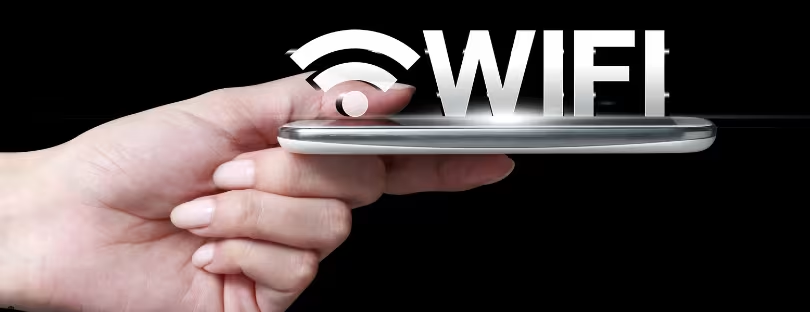
What Is The Cost Of Free WiFi?
Ease of access is a true double-edged sword. Like all powerful technologies, free WiFi (public WiFi in particular) can be easily exploited. You may have read about attacks on publicly accessible WiFi networks, yet studies show that more than 70% of participants admit to accessing their personal email through public WiFi. free wifi
If it seems too good to be true, it probably is.
Wi-Fi’s popularity does create challenges for individual users, enterprise IT admins and even mobile operators. Users tend to flock to free, public Wi-Fi, which offers an immediate cost advantage over paid, premium Wi-Fi. What can be wrong with that?
A recent Norton Wi-Fi Risk Report shows that nearly everyone (84 percent of respondents) puts their personal information at risk when using public free WiFi to perform a variety of tasks, like checking email or bank account information.
It turns out that ignorance is bliss. Sixty percent of consumers feel their personal information is safe when they use free, public Wi-Fi. But nothing in this world is free, especially Wi-Fi. In fact, it’ll cost you dearly.
Here are the three hidden costs of free Wi-Fi:
- Lack of security and privacy. This is the big one. The data you transmit over open unsecured, free, public Wi-Fi networks is vulnerable to prying eyes and hackers. According to FBI data, more than 4,000 ransomware attacks have occurred on a daily basis, a 300 percent jump from 2015. There’s a cost associated with these cyberattacks, not just public embarrassment, but also money. Case in point: a 2016 Hiscox Cyber Readiness Report showed that cybercrime cost the global economy over $450 billion. Prior to that report, Juniper research had predicted that mobile data breaches would cost the global economy over two trillion dollars by 2019. For individual companies, Forbes has estimated that the average cybercrime costs more than $15 million a year.
- Lack of productivity. Trying to access free, public Wi-Fi costs productivity, since free Wi-Fi isn’t as prolific as public opinion would suggest. To wit, finding usable public Wi-Fi takes time and effort. And when there is no free Wi-Fi, mobile users do without. When those users are mobile enterprise professionals, they tend to do without and can’t work efficiently. That lost productivity has a financial component for businesses, detailed in our Connectivity Cost Index, which captures the financial cost of mobile connectivity for businesses. Taken as an average, the real cost of a U.S. user’s relying on free Wi-Fi is $1,159/per month, a similar cost to U.K., French and German users. That hidden financial cost is borne by companies alone.
- Lack of a seamless user experience. More to the point, with free Wi-Fi, you get what you pay for, in terms of quality. Free Wi-Fi introduces a host of user experience inconveniences, including pop-ups, spam, session time-outs and, of course, suboptimal network speeds from network congestion. That shoddy user experience also has a deleterious impact on productivity, preventing users from performing high-bandwidth activity on Wi-Fi, like video conferencing, downloading high data files and accessing multi-media applications.
A few potential solutions to mitigate the risks associated with free public Wi-Fi include:
Use of VPN: A Virtual Private Network (VPN) can provide a secure connection over public Wi-Fi, encrypting your data and protecting your information from potential hackers.
Data-Only Plans: Opting for a data-only plan from a reliable service provider can ensure secure and consistent internet access, eliminating the need for public Wi-Fi.
Personal Hotspot: If your mobile plan allows, you can use your phone as a personal hotspot for a more secure connection.
Public Wi-Fi with Caution: If using public Wi-Fi is unavoidable, ensure you’re accessing only secure websites (HTTPS), avoid entering sensitive information, and always log out from services after use.
Use of Antivirus Software: Updated antivirus software can provide an additional layer of protection against potential threats on public networks.
Remember, the key is to prioritize your digital security and privacy over the convenience of free public Wi-Fi.









